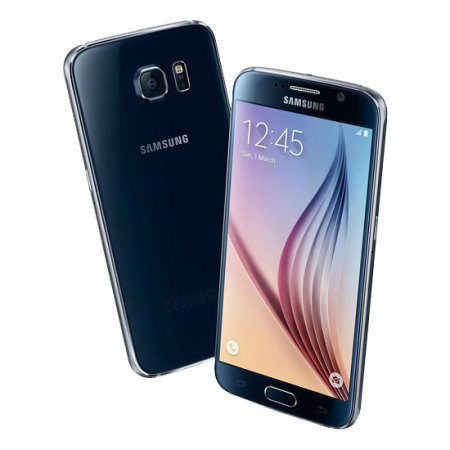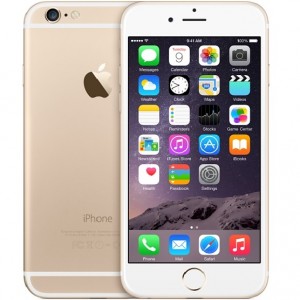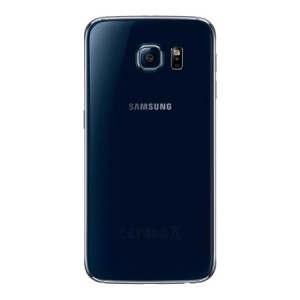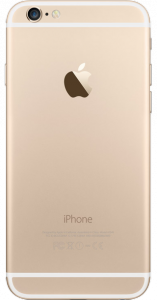With the recent release of all the specifications of the Samsung Galaxy S6, there’s a lot of speculation as to whether the S6 trumps the iPhone 6. Obviously the usual Apple vs Android will play a big part in your personal preference, but I’m going to take a look and compare the hard facts of the two devices.
Specifications:
| iPhone 6 | Galaxy S6 | |
| Dimensions | 138.1 x 67 x 6.9 mm | 143.4 x 70.5 x 6.8 mm |
| Weight | 129g | 138g |
| SIM | Nano-SIM | Nano-SIM |
| Internal Memory | 16/64/128 GB, 1 GB RAM | 32/64/128 GB, 3 GB RAM |
| Memory Card Slot | No | No |
| Screen Size | 4.7″ | 5.1″ |
| Screen Resolution | 750 x 1334 pixels | 1440 x 2560 pixels |
| Operating System | iOS 8, upgradable to iOS 8.2 | Android OS, v5.0.2 (Lollipop) |
| Rear Camera | 8 MP, 3264 x 2448 pixels | 16 MP, 2988 x 5312 pixels |
| Front Camera | 1.2 MP, 720p@30fps | 5 MP, 1080p@30fps |
| Battery | Non-removable Li-Po 1810 mAh | Non-removable Li-Ion 2550 mAh |
Build: According to Samsung, the S6 is 50% stronger than previous models with it’s metal chassis, and although it doesn’t look much different at first glance, it’s clear from the feel of the phone that Samsung have upped their game. And of course, Samsung can boast that the S6 doesn’t bend! However, the iPhone 6 definitely tops the S6 with it’s smooth and sleek design – Samsung still don’t seem to have mastered building the camera into the phone – the S6’s camera sticks out even more than previous models! With the iPhone 6 and S6 at 129 and 138g respectively, there’s not a lot of difference as far as weight is concerned, with the S6 slightly heavier – as to be expected with it’s slightly larger dimensions.
Screen: Despite the increased iPhone screen size of 4.7″, the S6 has maintained the same size as the S5 at a sizeable 5.1″, bench-marked perfectly between the size of the iPhone 6 and iPhone 6 Plus. I guess it depends what you use your smartphone for most, but with the S6 far surpassing the iPhone 6’s 326ppi screen with it’s impressive 577ppi QHD standard display, if you want to watch films on your smartphone, the S6 certainly wins on this feature!
Camera: Again consistent with the S5, the S6 has a 16mp rear camera and a 5mp front camera, but that does not mean that no improvements have been made – a f/1.9 aperture lens now features on both of the S6’s cameras, massively enhancing the quality of photos taken in low light. There’s no doubt that this tops the iPhone 6’s 8mp rear camera and 1.2mp front camera with a f/2.2 aperture lens.
Storage: Samsung have decided to remove the memory card slot for the Galaxy S6, which may deter some potential customers, and make the buyer’s decision more about iOS vs Android than iPhone 6 vs Galaxy S6. The iPhone 6 is available in 16,64 & 128gb varieties whereas the Samsung are offering 32, 64 & 128 S6s. It’s also worth noting that the S6 comes with OneDrive with 155GB of storage, provided to the user for 2 years. Although the options are similar, for the entry level customer, the S6 does has more to offer!
Software: With the iPhone 6 using iOS, and the S6 using Android 5.0 Lollipop, individual opinion may act as a major factor when it comes to deciding which device is ultimately the best. There’s been a lot of recent criticism with regard to Samsung’s decision here – TouchWiz UI have become known for needless apps, and many think that Samsung should have perhaps toned this down for the S6! Many argue that day to day usability of iOS seems to exceed that of Android 5.0 Lollipop and that the OS generally seems a lot cleaner.
Overview: Samsung seem to be veering in the direction of Apple. With emphasis on the design and finish of the S6, as well as the removal of the memory card slot. Combined with the amazing specifications that Samsung have always provided, and the incredible camera quality that the S6 provides, Samsung have definitely created a huge contender for the iPhone 6. If they could just improve upon the TouchWiz UI, then Samsung may be on to a winner. Although Apple haven’t really pulled anything amazing out the bag with the iPhone 6, with so many dedicated iOS users, and the outstanding usability of the iOS system, it was always going to be a success.



